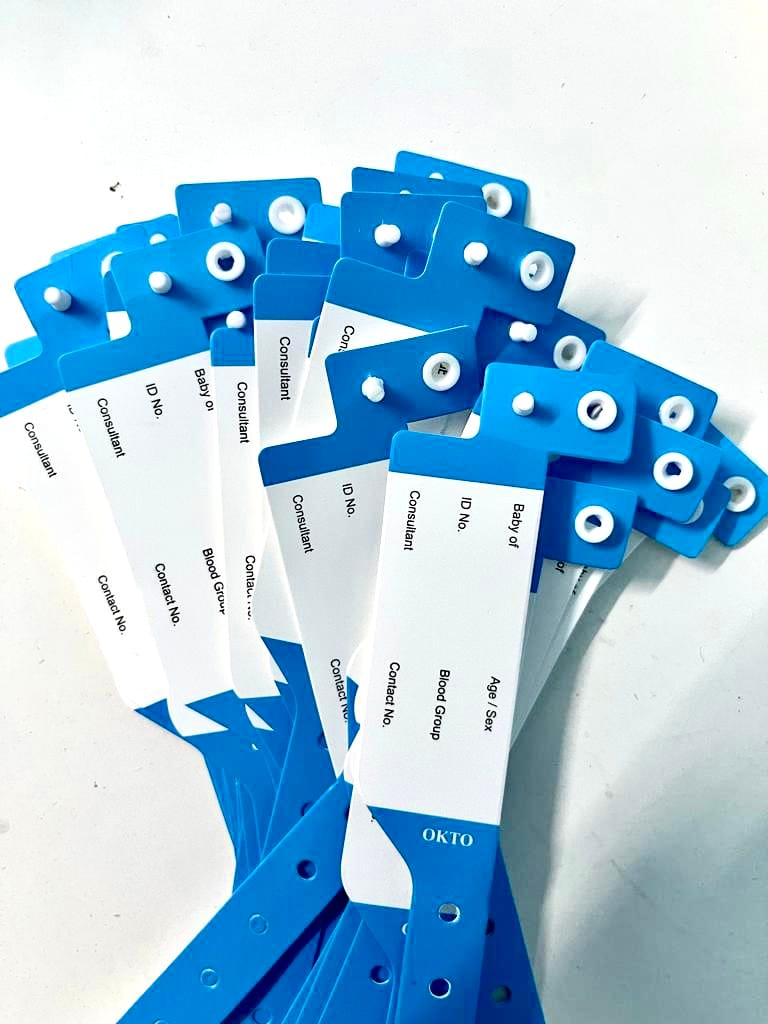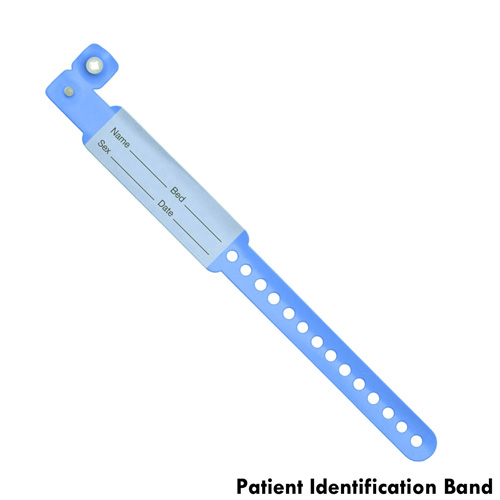Just How Patient Identification Band Improves Patient Safety in Clinical Settings
Just How Patient Identification Band Improves Patient Safety in Clinical Settings
Blog Article
Enhancing Security: The Significance of Person Recognition Bands in Healthcare
In the world of health care, the efficacy of person identification bands can not be overemphasized, as they function as a fundamental guard against misidentification and subsequent mistakes. These bands, often ignored, contain vital details that is important for making sure patient security and ideal therapy outcomes. Nevertheless, the execution of effective identification procedures postures several challenges that doctor should browse. As we discover the multifaceted function of these bands, it comes to be evident that their significance prolongs past simple recognition, questioning concerning finest practices and future developments in person safety and security.
Overview of Client Identification Bands
Patient recognition bands play a crucial duty in making certain the safety and security and accuracy of patient treatment in medical care setups. These bands, usually worn on the wrist or ankle joint, function as a vital tool for confirming client identity, therefore lessening the risk of mistakes in treatment, medication management, and other healthcare treatments. Made from durable products, client recognition bands commonly include essential details such as the client's name, date of birth, medical document number, and barcodes or QR codes for scanning.
The application of person recognition bands is crucial in various medical care environments, consisting of healthcare facilities, outpatient facilities, and long-lasting treatment establishments. They contribute to a methodical approach in individual management, allowing medical care professionals to swiftly and accurately determine people, particularly in high-pressure scenarios where swift decision-making is vital.
In addition, making use of these bands is aligned with regulative requirements focused on improving individual safety and security - Patient Identification Band. By making sure that each person's info is easily verifiable and easily available, health care providers can maintain a high standard of care, reduce the incidence of adverse events, and foster a society of security within medical care organizations
Advantages of Accurate Recognition
Precise identification is essential to boosting person security and care high quality in health care settings. It acts as the initial line of protection against errors that can bring about negative individual results. By guaranteeing that each patient is appropriately recognized via trusted ways, such as client identification bands, doctor can dramatically lessen the risk of misidentification, which can cause unsuitable treatments, drug errors, and also surgical mix-ups.
Moreover, exact client identification assists in effective interaction among medical care teams. When all employee can consistently recognize clients, they can share critical info more successfully, resulting in far better sychronisation of treatment. This is particularly vital in emergency scenarios where timely treatments are essential.
In addition, exact identification sustains conformity with regulatory criteria, thereby minimizing the threat of legal effects for healthcare centers. It fosters depend on in between patients and doctor, as individuals really feel more safe and secure understanding that their identifications are being secured.

Typical Difficulties Faced
Making certain efficient client recognition in medical care setups provides a series of obstacles that can compromise safety and security and care high quality. One significant challenge is the irregularity in patient populaces. Individuals may get here in a state of confusion or distress, making accurate identification difficult. In addition, language barriers can prevent efficient interaction, complicating the confirmation process.
Another obstacle is the dependence on human consider identification treatments. Healthcare specialists may inadvertently misunderstand or overlook identification protocols, why not try this out especially in high-stress atmospheres such as emergency departments. This can bring about errors, including the administration of inaccurate therapies or medications.
Technological problems likewise posture obstacles. Although electronic health record (EHR) systems are created to enhance patient identification, system failures or individual errors can interrupt the procedure. The physical design of patient ID bands can lead to readability concerns, specifically in instances where bands are harmed or obscured.
Lastly, inconsistent training amongst team regarding recognition methods can lead to gaps in knowledge and technique. Resolving these obstacles is vital for improving client safety and ensuring that recognition bands serve their intended objective successfully.
Best Practices for Implementation
To properly carry out client recognition bands in health care settings, companies should adopt a complex method that prioritizes standardization, training, and modern technology combination. Standardization involves developing clear protocols for the layout, application, and use of recognition bands across all divisions. This makes sure uniformity and reduces the threat of errors connected to variances in band kinds or labeling approaches.


Training is necessary for all health care team to guarantee check my blog they comprehend the significance of accurate client identification, how to properly read and use recognition bands, and the procedures to follow in instance of disparities. Routine workshops and correspondence course can reinforce this understanding and advertise a culture of safety and security.
Innovation integration plays an essential role in improving the effectiveness of individual identification bands. Utilizing barcode scanning or RFID modern technology can improve the recognition procedure, enabling for real-time verification of person identities. In addition, electronic wellness record systems must be configured to consist of informs for mismatches between the identification band and individual information.
Future Trends in Client Security
As medical care continues to progress, the focus on patient security is most likely to increase, driven by developments in modern technology and a greater understanding of systemic threats. Emerging patterns show a change towards more integrated systems that take advantage of information analytics, fabricated intelligence, and artificial intelligence to improve person recognition procedures. These technologies can help identify prospective security problems prior to they intensify, therefore lowering mistakes related to misidentification.
Moreover, the implementation of blockchain technology may transform how patient data is firmly shared among doctor, ensuring that identification bands are current and continually exact. This will certainly not only improve client safety but additionally promote smooth interaction across multidisciplinary teams.

In addition, the expanding emphasis on personalized medicine is expected to influence person safety protocols. By integrating hereditary and group information into identification systems, health care experts can customize therapies more efficiently, lessening the threats of damaging responses due to misidentification.
Conclusion
In conclusion, individual identification bands offer as a vital component in improving security within healthcare settings. Eventually, the continued focus on durable identification protocols will certainly contribute to enhanced individual end results and total safety and security in healthcare settings.
In the realm of medical care, the effectiveness of client recognition bands can not be overstated, as they offer as an essential safeguard versus misidentification and succeeding Website errors.Person identification bands play an important role in making certain the safety and precision of patient treatment in healthcare settings. Made from sturdy materials, individual identification bands commonly include vital details such as the client's name, day of birth, medical record number, and barcodes or QR codes for scanning.
By making certain that each patient is properly recognized through trustworthy means, such as client recognition bands, healthcare companies can dramatically minimize the danger of misidentification, which can lead to unacceptable therapies, medication errors, and also medical mix-ups.
In verdict, patient identification bands serve as a crucial part in boosting safety within healthcare atmospheres. Patient Identification Band.
Report this page